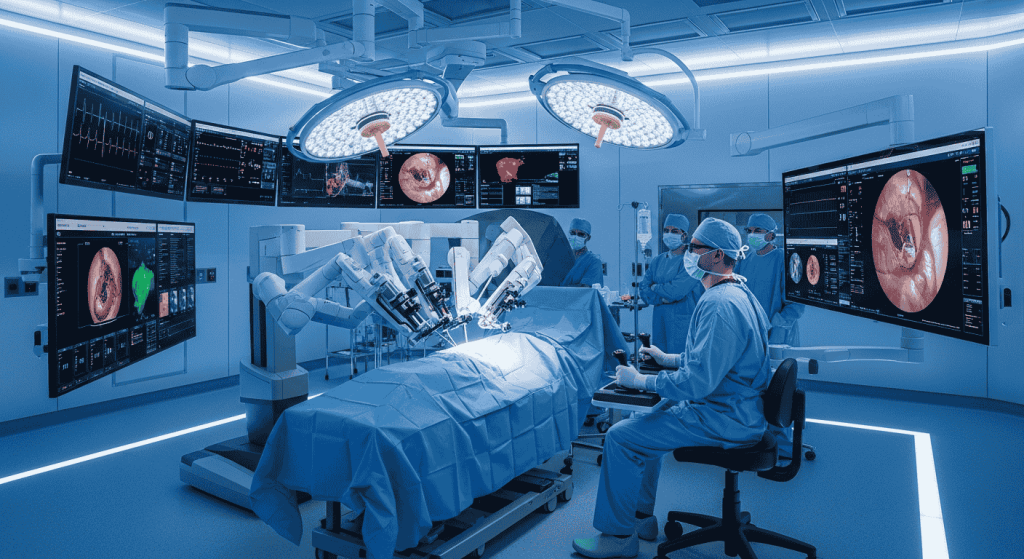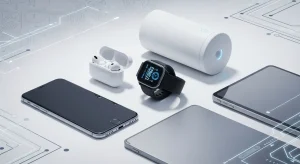The rise of medical robotics marks a new era in healthcare. With the integration of advanced technologies, surgical robots and AI-driven healthcare systems are improving accuracy, reducing human error, and offering faster recovery times. From robotic surgery to automated diagnostics, medical robotics is not just a future concept — it’s already revolutionizing hospitals around the world.
In this article, we explore how robotics in healthcare is reshaping medicine, its benefits, key applications, and what the future holds.
What Is Medical Robotics?
Medical robotics involves the use of robots to assist doctors, surgeons, and healthcare providers in performing complex procedures and tasks. These systems combine robotic hardware, AI algorithms, and machine learning to enhance precision and efficiency.
Some popular types include:
-
Surgical robots
-
Rehabilitation robots
-
Hospital automation robots
-
Diagnostic robots
AI-Powered Automation at Work: Transforming the Modern Workplace
Key Benefits of Medical Robotics
Here’s why medical robotics is becoming essential in modern medicine:
| Benefit | Description |
|---|---|
| High Precision | Surgical robots offer unmatched accuracy in delicate procedures |
| Minimally Invasive Surgery | Smaller incisions lead to quicker recovery and reduced infection risk |
| Consistency and Reliability | Robots don’t tire or make judgment errors |
| Enhanced Imaging and Vision | Advanced sensors improve real-time decision-making |
| Remote Surgery Capabilities | Surgeons can operate on patients remotely using tele-robotics |
Applications of Robotics in Healthcare
1. Robotic Surgery
Robotic surgery allows doctors to perform operations with robotic arms controlled via console. Systems like da Vinci Surgical System are used for:
-
Cardiac surgery
-
Prostatectomy
-
Hysterectomy
-
Bariatric surgery
These surgical robots offer steady hands, 3D magnified views, and enhanced dexterity.
Rental Deposit Insurance: A Smarter Alternative to Traditional Deposits
2. Rehabilitation Robotics
Robots assist in patient rehabilitation after strokes or physical injuries. Devices like exoskeleton suits help restore mobility and muscle coordination.
3. Hospital Automation Robots
These are used for:
-
Delivering medications or meals
-
Disinfecting hospital rooms with UV light
-
Managing patient logistics and records
They streamline workflows and reduce human workload.
4. Robotic Diagnostics
AI-powered diagnostic robots can analyze imaging scans, blood samples, or even detect cancers early using algorithms more accurately than some human counterparts.
The Role of AI in Medical Robotics
AI in medical robotics enables machines to learn, adapt, and make decisions. With deep learning models and predictive analytics, AI-driven robots can:
-
Recognize patterns in patient data
-
Optimize surgical strategies
-
Provide post-op recommendations
-
Enhance robotic vision for better spatial understanding
This integration of medical technology and artificial intelligence is pushing the boundaries of precision medicine.
Buy Now, Pay Later (BNPL): Everything You Need to Know in 2025
Top Medical Robotics Companies to Watch
| Company | Innovation Area |
|---|---|
| Intuitive Surgical | Creator of da Vinci Surgical Robot |
| Stryker | Orthopedic robotic systems |
| Medtronic | Minimally invasive surgical tools |
| Cyberdyne | Exoskeleton rehab robots |
| Siemens Healthineers | AI-driven imaging and diagnostics |
Future Trends in Medical Robotics
Looking ahead, healthcare robotics will become more autonomous and accessible. Emerging trends include:
-
5G-enabled remote surgeries
-
Nanobots for targeted drug delivery
-
Voice-assisted robotic nursing
-
Smart hospital ecosystems with AI coordination
As these innovations unfold, medical robotics will continue to bridge gaps in patient care, cost-efficiency, and global accessibility.
Frequently Asked Questions (FAQ)
1. What are the risks of robotic surgery?
While robotic surgery is generally safe, risks include mechanical failure, longer procedure time, and the need for surgeon expertise. However, its benefits often outweigh the risks.
2. Can medical robotics replace doctors?
No. Medical robotics is designed to assist—not replace—doctors. Surgeons and medical staff are essential for making informed decisions and overseeing robotic procedures.
3. How accurate are surgical robots?
Surgical robots are extremely accurate, often reducing human error. They offer millimeter-level precision, ideal for delicate or minimally invasive procedures.
Final Thoughts
Medical robotics is a breakthrough innovation that’s changing how healthcare is delivered. From robotic surgery to hospital automation, it empowers medical professionals with tools to enhance patient outcomes and optimize efficiency.
As AI and robotics evolve, patients can expect faster recoveries, safer procedures, and smarter diagnostics. The future of healthcare is not just digital — it’s robotic.











